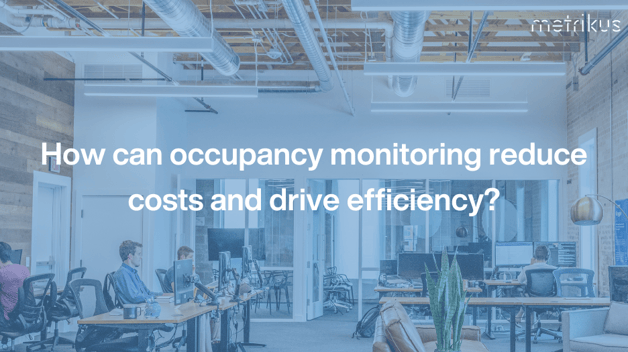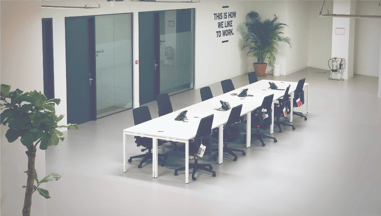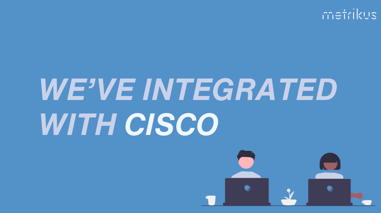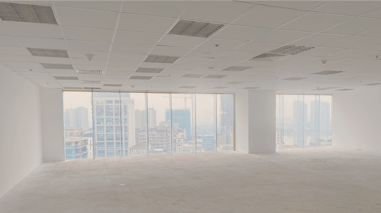How can occupancy monitoring reduce costs and drive efficiency?
With a lot of offices still half empty, companies are thinking about how they can cut real estate costs and reduce energy bills.
However, without access to accurate occupancy data, it’s impossible for them to understand how their space is actually being used.
Real-time occupancy monitoring does exactly this – providing companies with the data they need to make informed decisions to drive efficiency.
Why is space optimization so important?
Renting office space is a huge expense, so you can understand why companies want to reduce this space where possible, especially if a large portion of it isn’t even being used.
Getting real-time data about space utilization is the first step in running a building as effectively and efficiently as possible. This involves installing sensors to monitor different data points – such as occupancy – to gain a comprehensive view of how often and when different areas are being used.
Once this data is collected and continues to be monitored, it can be used to inform decisions about downsizing or reallocating space, creating a more effective hybrid work strategy, and reducing energy consumption.
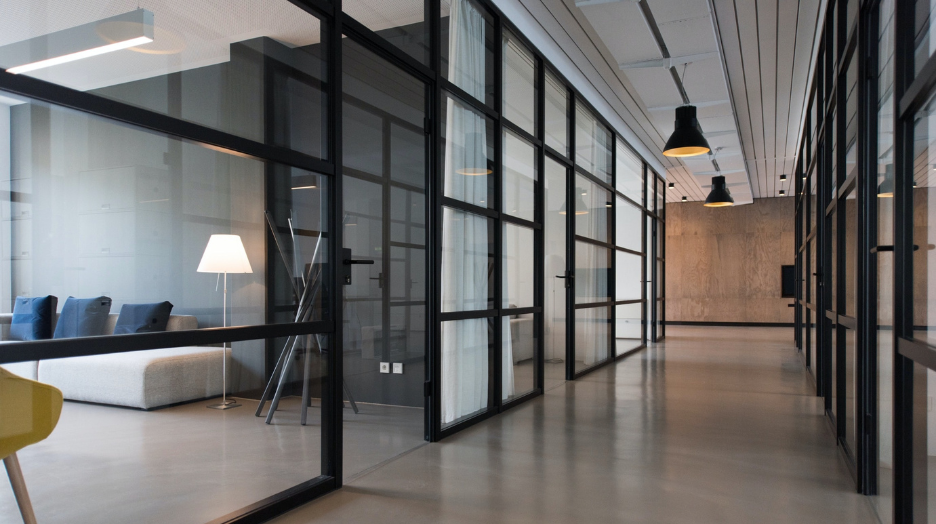
How does occupancy monitoring work?
Occupancy monitoring uses IoT sensors to gather data about how your space is being used.
There are loads of different sensors to choose from, some of which are much more accurate than others. The type and number of sensors installed is completely dependent on the specific needs of your company.
Some of the main detection technologies include:
- Passive infrared (PIR)
- Ultrasonic (US)
- Image recognition
And some of the most common types include:
- Desk sensors
- Meeting room presence
- Meeting room counting sensors
- People counting sensors
A common concern with occupancy monitoring is that it might infringe on occupancy privacy. But in reality, the majority of sensors don’t actually capture any identifiable information about occupants. For example, an occupancy sensor would count ‘one person at desk X’, rather than ‘Joe Bloggs is at desk 12’.
As with all things, it’s just important to do your research so that you end up using occupancy sensors that are completely compliant with privacy laws. It’s also worth discussing not only with relevant stakeholders, but also with team members so they can understand how the systems work.
Why is occupancy monitoring more accurate than badge data?
Some companies use badge data to get an idea of how many people are working in their space, but this data can be inaccurate and rarely provides the full picture.
The problem is that badge data measures attendance rather than occupancy. This means it can show roughly how many people are in the workplace at any given time, but not reveal how employees are actually using the space.
If companies want to make informed decisions about rightsizing their office, they need accurate data about:
- How meeting rooms are being used
- How specific desks are being used
- Which spaces are most or least popular
And this is exactly what you get from occupancy sensors – a holistic view of your building, and the context you need to make data-driven decisions.
.png?width=936&height=524&name=How%20can%20occupancy%20monitoring%20reduce%20costs%20and%20drive%20efficiency%20(2).png)
What are the benefits of occupancy monitoring?
1. Understanding how much space is required
Workplace occupancy monitoring can show average utilization levels and highlight specific areas that are underused, allowing companies to make informed decisions about downsizing.
2. Helping employees to find available seats and spaces
We’ve all been there: wandering around trying to find a free conference room, and suddenly half your allocated time has been used up. Communicating occupancy data to employees and occupants can help reduce time wasted due to finding a suitable meeting space or desk.
3. Implementing a hybrid model
Desk booking systems with integrated monitors allow employees to book their seat ahead of time, and the desk is made available if they don’t end up using it. This is a great way of implementing flexible working while maintaining oversight of how much your space is actually being used.
4. Optimizing office layouts
Analysis can be done to see if the space is configured in a way which actually suits occupant needs. For example, if a large boardroom is consistently being used for meetings with just two or three people, it could be worth rearranging the layout to include fewer large meeting spaces, and having more smaller areas for private conversation.
5. Reducing energy consumption
If you know a specific area – or even an entire floor – is completely empty, you can make sure HVAC systems are adjusted accordingly to avoid energy being wasted in unoccupied areas. It’s thought that at least 30% of the energy consumed by commercial buildings goes to waste, so there are some big potential savings on offer.
What are you waiting for?
If you want to understand how your office is actually being used, it’s time to implement occupancy monitoring in your space.
Book a workplace consultation with one of our experts to find out how you can start saving money and driving efficiency.

